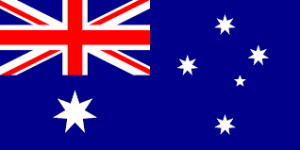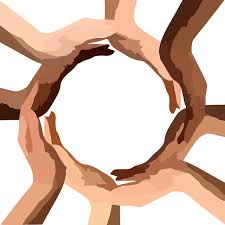
Explore fun, engaging and exciting world themed activities to do with toddlers, preschoolers and kindergartners. Our activities are widely used by teachers, moms, dads, child care providers and more!
All our activities are available at no cost and are free to print and share. Today we will be covering Native American theme.
Native American Arts and Crafts

Headdress
We read where the Native Americans had to earn feathers for their headdress. Well, during the week we study Native Americans my students make a headband on Monday it is hung on our clothesline with their name on it. During the week every time they do a kind deed they earn a feather. I do make sure every one has at least one feather by Friday in on their headband.
Teepee
Supplies needed:
5 straight twigs (about a foot long each)
Yarn, twine, or a rubber band
A large, brown paper grocery bag
Scissors
A pencil
Crayons, tempera paint, or markers
Tape
Bind the twigs together toward the top using yarn, string, or a rubber band. Leave about 3 inches of twig at one side of the string. Do not bind the twigs too tightly. Gently adjust the twigs so that they form a tepee shape. Holding the tepee above a piece of scrap paper, trace the outline of one side of the tepee. This will be your template for making the tepee. Cut out your triangular template. Open up a large paper bag along its seams. Lay your triangle template on the opened bag and trace its outline.
Trace the triangle 3 more times with the long edges touching. Cut out this large polygon along the outside edge. Cut a door on one edge. Decorate the tepee using crayons or markers. Fold the paper along each of the pencil lines. Then form the paper into a tepee shape and tape the edges together. Snip off the top of the tepee (the twigs will go through this hole). Put the twigs into the tepee. Tape the twigs into place – each twig is taped along a fold line.
Rainsticks
Supplies needed: A paper towel tube or other long cardboard tube Aluminum foil, Small dried beans (like lentils), unpopped popcorn, dry rice, or tiny pasta. Brown paper (from a grocery bag) or construction paper, glue, scissors, crayons or markers
Trace around the end of your tube onto a piece of brown paper (or construction paper). Draw a bigger circle around that circle and then draw a lot of spokes between the two circles. Cut along the spokes. Put glue on the spokes and glue the cap onto one end of your tube. Cut a piece of aluminum foil that is about one and half times the length of your tube and about 6 inches wide. Crunch the aluminum foil into two long, thin, snake-like shapes.
Then twist each one into a spring shape. Put the aluminum foil springs into your tube. Pour some dry beans, dry rice, or unpopped popcorn into your tube. The tube should only be about 1/10 full. You can experiment to see how different amounts and different types of seeds and beans change the sound. Make another cap from brown paper (the same as the first three steps) and cap your tube.
Optional: Decorate the tube by covering it with brown paper or construction paper, and then making designs with crayons or markers (or cut-out paper or stickers).
Totem Poles
Supplies needed: A paper towel tube
Crayons, tempera paint, or markers
Brown construction paper (a few sheets)
Scissors
White glue
2 popsicle sticks (optional)
Wrap a piece of construction paper around a paper towel tube to see what size paper you will need. Trim the paper to the right height and width (allow about a half inch overlap around the tube, so you can glue the edges). Divide the paper into 4 or more horizontal sections.
Have the child draw a different animal head in each section. Put most of the facial details in the middle of each section. If you’re working with a group of children, cut the paper into sections and have each child draw one face. Wrap the heads around the paper towel tube and glue the seams. Draw wings or arms for some or all of the animals. Cut them out and decorate them. Glue them to the back of the Totem Pole.
Optional: Glue 2 popsicle sticks to the base so that your Totem Pole stands upright. Hot glue works well for this.
Dream Catchers
For each dream catcher you will need:
A bendable twig about 1 foot long
A few inches of thin wire
Some twine
Beads with large holes
A few feathers
Use thin wire to tie the ends of a twig together to make a hoop. Have an adult make a hoop from a twig. To do this, wrap a short length of thin wire around the overlapping ends. Cut a few feet of twine. Tie one end of the twine to the twig hoop. String a few beads onto the twine and push the beads toward the tied end. Wrap the twine around the other side of the hoop.
String a few more beads on the twine and then wrap the twine around the far side of the hoop. Repeat until you have an interesting webbing design. Tie a short length of twine on the hoop. String a bead or two on it and then tie a feather onto the end. Repeat this a few times (2 or 3 hanging feather strings look nice.) Hang the dream catcher near your bed!
Birch Canoe
Supplies needed: Brown construction paper or brown paper from a grocery bag
Crayons, tempera paint, or markers
Scissors
Yarn
Hole punch
Fold the piece of construction paper in half the long way. About a half-inch from the fold line, make another fold. Do this on both sides of the original fold. The paper should now look a bit like a capital “W.” The folds will be the bottom of the canoe. Draw a canoe shape on the paper (make sure the folds are on the bottom of the canoe). Cut out the canoe shape and punch a few holes on each end. Using yarn, weave through the holes. Push the folded floor flat so that the canoe sits upright.
Native American Games and Activities

Teaching Respect For Native Peoples
I find the following guidelines to be helpful in a daycare/school setting. Note that making “headdresses” (a common preschool activity) is not recommended in a respectful environment.
This is excerpted from an Oyate organization publication. Oyate is a Native organization working to see that Native peoples lives and histories are portrayed honestly:
Don’t teach Indians only at Thanksgiving. Do present Native peoples as appropriate role models with whom a Native child can identify. Don’t assume that you do not have any Native children in your care. Do use respectful language in teaching about Native peoples. Do talk about lives of Native peoples in the present, not just the past as if they do not exist anymore. Do look for books and materials written and illustrated by Native peoples. Don’t use books that show Native people as savages, war-lovers, primitive crafts people or other characteristics of now extinct cultures.
Don’t use storybooks that show non-Native children playing Indian. Do avoid arts and crafts and activities that trivialize Native dress, dance, or ceremony. The headdress is considered sacred by most Native American cultures; so do not imitate it by making paper headdresses for children to play with. Do learn the history of Native peoples, past and present, before you attempt to teach it.
Do present Native peoples or tribes as separate. Do use materials that show Native women, elders, and children as important to Native societies. Don’t assume that every Native American will know about every other Native Nation (tribe), or that children will know details about their own tribe.
Resource Person
Invite volunteers to demonstrated Native American dance.
Music
Listen to tapes of Native American music while working on art projects or other times throughout the day.

Dear Reader: You can help us make this theme even better!
All of our theme ideas have come from our imagination and from reader submissions. Please use this form to contact us if you have crafts, activities, games, recipes, songs or poems that you would like us to add to this theme.








